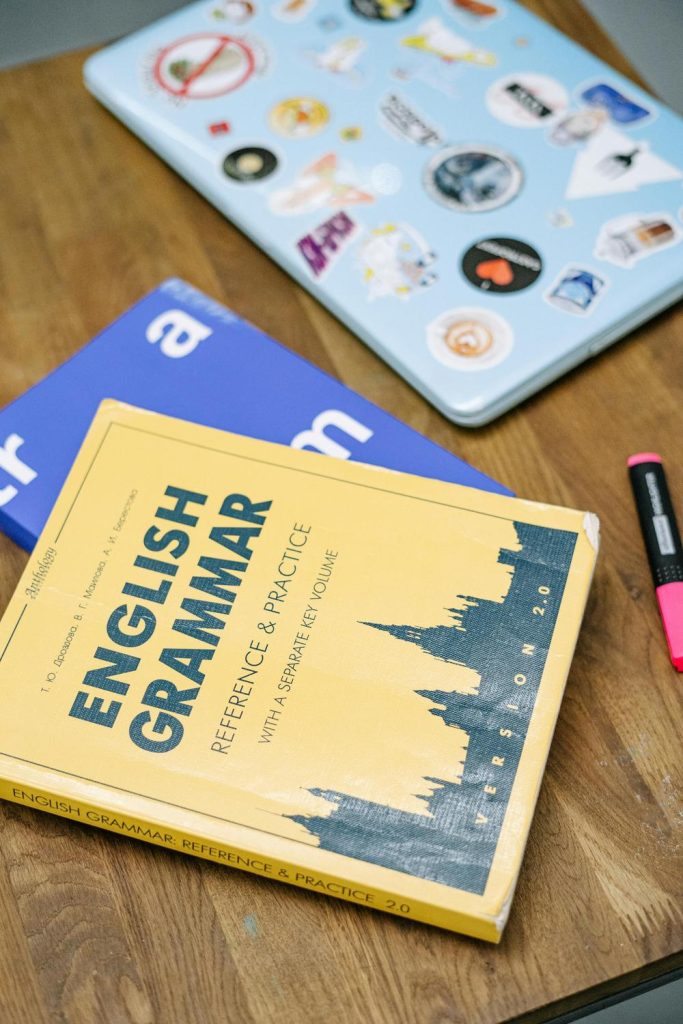
Literacy Skills for English as Additional Language Learners: A Comprehensive Guide for Southeast Queensland Families
The moment a child realises they're reading a sentence in a language that wasn't spoken at home—that they're making meaning…

The transition from primary to secondary school represents one of the most challenging periods for teenagers with learning difficulties. As curriculum demands intensify and academic expectations soar, many adolescents find themselves struggling to keep pace with their peers. In Queensland communities from Cleveland to Capalaba, from Ormiston to Springwood, families are increasingly seeking answers to support their teenagers through this critical educational phase.
Recent Australian data reveals a concerning reality: approximately one in five students enters secondary education without the foundational literacy skills necessary to comprehend curriculum texts. This statistic becomes even more alarming when considering that 25.7% of school students now receive educational adjustments due to disabilities—a dramatic increase from 18.0% in 2015. For families across Southeast Queensland, understanding how to navigate this landscape whilst supporting their teenager’s unique learning needs has become paramount.
The adolescent years bring unique challenges that extend far beyond academic performance. Teenagers with learning difficulties often experience heightened anxiety, reduced self-confidence, and social pressures that can compound their educational struggles. However, with appropriate understanding, evidence-based strategies, and comprehensive support systems, these young people can thrive academically and personally throughout their secondary education journey.
Supporting teenagers with learning difficulties requires first understanding the specific challenges they face. The most prevalent conditions affecting Australian adolescents include Dyslexia, dysgraphia, and developmental language disorders, often presenting in complex combinations rather than isolation.
Dyslexia affects an estimated 10% of Australians, though actual rates may approach 20% when undiagnosed cases are considered. This neurological condition primarily impacts reading accuracy, fluency, and comprehension. Teenagers with dyslexia often struggle with decoding multisyllabic words found in secondary texts, particularly in subjects like science and humanities where technical vocabulary dominates.
Dysgraphia presents significant challenges in handwriting, spelling, and written expression, affecting 10-30% of students with higher incidence among males. For teenagers, this condition becomes particularly problematic as secondary education demands increasingly sophisticated written responses across all subject areas.
Developmental Language Disorder impacts approximately 7% of children and adolescents, affecting both spoken and written language comprehension. This condition often overlaps with other learning difficulties, creating compound barriers to academic participation.
| Learning Difficulty | Prevalence Rate | Primary Challenges in Secondary School | Gender Distribution |
|---|---|---|---|
| Dyslexia | 10-20% | Reading comprehension, technical vocabulary, text analysis | Higher in males |
| Dysgraphia | 10-30% | Written expression, note-taking, essay writing | 65% males, 54% females |
| Developmental Language Disorder | 7% | Oral presentations, listening comprehension, following complex instructions | Equal distribution |
| ADHD (co-occurring) | 5% | Sustained attention, organisation, task completion | 3:1 male to female ratio |
Importantly, overlapping conditions are the norm rather than the exception. Approximately 80% of individuals with dysgraphia present comorbid conditions like dyslexia or ADHD, creating multifaceted challenges that require comprehensive, individualised approaches.
The transition to secondary education introduces structural changes that can significantly impact teenagers with learning difficulties. Unlike primary school environments that typically feature consistent teacher-student relationships and integrated literacy instruction, secondary schools present fragmented timetables, subject-specialist teachers, and exponentially increasing literacy demands.
Curriculum Complexity escalates dramatically in secondary education. Where primary texts might contain 1,000-2,000 unique words, secondary curriculum materials can feature 10,000-15,000 different vocabulary items. Science textbooks introduce technical terminology at rates exceeding 3,000 new terms per year, whilst humanities subjects demand sophisticated text analysis skills that many students haven’t explicitly developed.
Teacher Preparedness varies significantly across secondary schools. Subject specialists often lack specific training in identifying or addressing learning difficulties, focusing instead on content delivery within their discipline. This gap becomes particularly pronounced in regional Queensland communities where specialist support services may be limited.
Social Pressures intensify during adolescence, and teenagers with learning difficulties often experience heightened anxiety about academic performance. The fear of appearing different or less capable can lead to avoidance behaviours, further impacting educational outcomes.
Assessment Methods in secondary school frequently emphasise written examinations, extended essays, and time-pressured tasks that particularly disadvantage students with learning difficulties. Traditional assessment approaches may not accurately reflect a student’s knowledge or capabilities, leading to underestimation of their potential.
Effective support for teenagers with learning difficulties centres on evidence-based approaches that address both immediate academic needs and long-term skill development. Research consistently demonstrates that structured, systematic interventions can produce significant improvements in learning outcomes.
Structured Literacy represents the pedagogical foundation for supporting adolescents with learning difficulties. This approach features explicit, systematic, and cumulative instruction across six key areas: phonological awareness, phonics, fluency, vocabulary, comprehension, and written expression. Unlike balanced literacy methods that rely on contextual guessing, structured literacy explicitly teaches the orthographic coding system through diagnostic, responsive methods.
Research demonstrates that secondary students receiving structured literacy interventions show average reading gains of 1.5 years after just 12 weeks of targeted instruction. Crucially, this approach benefits all learners by building metalinguistic awareness necessary for decoding complex disciplinary texts across all subject areas.
Multisensory Learning Techniques engage visual, auditory, tactile, and kinesthetic pathways simultaneously. For teenagers with dysgraphia, combining speech-to-text technology with explicit instruction in sentence structure and paragraph organisation can dramatically improve written expression. These approaches help students bypass processing bottlenecks whilst building underlying skills.
Metacognitive Strategy Training teaches students to understand and monitor their own learning processes. Teenagers learn to identify their strengths and challenges, select appropriate learning strategies, and evaluate their progress. This self-awareness becomes particularly crucial during adolescence as students assume greater responsibility for their educational outcomes.
Technology Integration offers powerful tools for supporting diverse learning needs. Speech-to-text software removes mechanical barriers to written expression, whilst digital graphic organisers help students structure complex ideas. Audiobooks and text-to-speech programs provide alternative access to curriculum content, ensuring that processing difficulties don’t limit learning opportunities.
Supporting teenagers with learning difficulties requires coordinated efforts between families, schools, and allied health professionals. Effective collaboration ensures consistent approaches across all environments whilst respecting each party’s expertise and perspectives.
Communication Strategies form the foundation of successful collaboration. Regular meetings between families and schools should focus on sharing observations, discussing progress, and adjusting support strategies. These conversations work best when conducted in plain language, avoiding educational jargon that might create barriers to understanding.
Individual Education Plans should be living documents that reflect current needs and goals rather than static paperwork. Effective plans include specific, measurable objectives with clear timelines and designated responsibilities. Regular review ensures that strategies remain relevant as the teenager’s needs evolve.
Professional Support Networks extend beyond classroom teachers to include guidance counsellors, learning support staff, and allied health professionals. Speech pathologists can provide crucial expertise in assessing and treating written expression disorders, offering diagnostic evaluations and evidence-based intervention strategies. Occupational therapists might address motor coordination components through handwriting fluency programs and ergonomic adaptations.
Home-School Consistency ensures that strategies implemented at school receive reinforcement in home environments. This doesn’t mean replicating classroom activities but rather supporting similar learning principles through everyday interactions. Families might incorporate vocabulary building into dinner conversations or use technology tools that complement school-based interventions.
Advocacy Skills empower families to navigate educational systems effectively. Understanding legal rights, available resources, and appropriate support services helps families ensure their teenager receives necessary accommodations. This advocacy extends to helping teenagers develop self-advocacy skills essential for their future independence.
Families across Southeast Queensland have access to various resources supporting teenagers with learning difficulties, though availability and accessibility can vary significantly between metropolitan and regional areas.
Government Services provide foundational support through the Department of Education’s Disability and Inclusion programs. These services include educational adjustments, specialised equipment, and additional staffing where appropriate. However, families should understand that accessing these services often requires detailed documentation and may involve waiting periods.
Allied Health Services play crucial roles in comprehensive support approaches. Speech pathologists can provide assessments and interventions specifically targeting language and literacy difficulties. Psychologists might offer cognitive assessments and strategies for managing anxiety or attention difficulties. Occupational therapists can address fine motor skills and sensory processing challenges.
Community Organisations offer valuable support and resources. Libraries across Southeast Queensland provide quiet study spaces, assistive technology, and homework help programs. Local disability advocacy groups can offer peer support and navigation assistance for families new to the system.
Technology Resources continue expanding, with many schools now providing device lending programs and assistive software. Online platforms offer structured literacy programs, educational games, and progress monitoring tools that can supplement classroom instruction.
Regional Considerations are important for families in areas like North Stradbroke Island or outer suburbs. Distance from specialist services, limited internet connectivity, and reduced professional availability can create additional challenges requiring creative solutions and flexible service delivery models.
Supporting teenagers with learning difficulties extends beyond immediate academic achievement to building skills and confidence for lifelong success. This comprehensive approach recognises that adolescence represents a critical period for developing independence and self-advocacy capabilities.
Self-Understanding helps teenagers recognise their learning strengths and challenges without shame or limitation. When young people understand how their brains process information differently, they can make informed choices about strategies and accommodations. This knowledge empowers them to communicate their needs effectively and seek appropriate support throughout their lives.
Skill Generalisation ensures that strategies learned in one context transfer to other situations. Teaching teenagers to apply reading comprehension techniques across different subjects, or to use organisational strategies in various environments, builds flexible thinking and adaptability.
Future Planning considerations include discussing post-secondary options, career pathways, and continuing support needs. Many universities offer excellent disability support services, and numerous successful professionals have learning difficulties. Helping teenagers envision positive futures maintains motivation during challenging periods.
Resilience Building recognises that teenagers with learning difficulties often develop exceptional problem-solving abilities, creativity, and determination through overcoming daily challenges. Celebrating these strengths whilst addressing difficulties creates a balanced perspective that supports healthy identity development.
The journey of supporting teenagers with learning difficulties requires patience, understanding, and evidence-based approaches. Success looks different for each individual, but with appropriate support, every teenager can achieve their potential and develop the skills necessary for independent, fulfilling lives.
Signs that may indicate your teenager requires additional support include persistent difficulties with reading comprehension despite adequate instruction, significant challenges with written expression, difficulty following multi-step instructions, or increasing anxiety about academic performance. If your teenager is working much harder than peers for similar results, or if teachers report inconsistent performance across different subjects, consider seeking professional assessment.
Learning difficulties are neurological differences that persist despite appropriate instruction and effort. They’re not caused by lack of intelligence, motivation, or inadequate teaching. Normal academic struggles typically respond to additional practice or different teaching approaches, whilst learning difficulties require specialised, evidence-based interventions. Learning difficulties also tend to be persistent across time and situations, rather than isolated to specific subjects or circumstances.
Absolutely. Many successful university students and graduates have learning difficulties. Australian universities provide comprehensive disability support services including extended time for examinations, alternative assessment formats, assistive technology, and study skills support. The key is developing strong self-advocacy skills and learning strategies during secondary school that transfer to university environments.
Focus on strengths and celebrate progress rather than comparing to peers. Help your teenager understand that learning difficulties represent different ways of processing information, not limitations on intelligence or potential. Encourage involvement in activities where they excel, whether that’s sports, arts, technology, or community service. Model resilience and persistence whilst providing emotional support during challenging times.
Seek professionals who use evidence-based approaches, particularly structured literacy methods for reading and writing difficulties. Look for providers who explain their methods clearly, involve families in planning, and collaborate with schools. Professionals should conduct comprehensive assessments, provide clear reports, and offer practical strategies that can be implemented across different environments. They should also demonstrate cultural sensitivity and understanding of your family’s specific needs and circumstances.